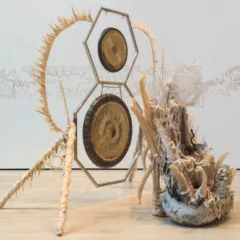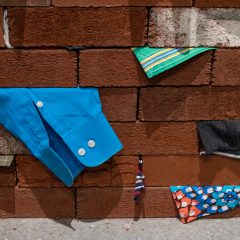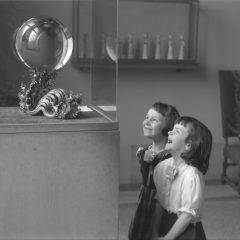Friday the 13th comes with an enduring baggage of being terribly unlucky. Even the great Italian composer Gioachino Rossini considered Fridays and the number 13 to be unlucky, ironically passing away on Friday the 13th. In contrast to the typical fear associated with this day, the Daedalus Quartet embrace it wholeheartedly, using the day itself as inspiration for their sold-out concert program of mostly new works in the Penn Museum’s Chinese Rotunda (co-presented by the Penn Music Department and Bowerbird).
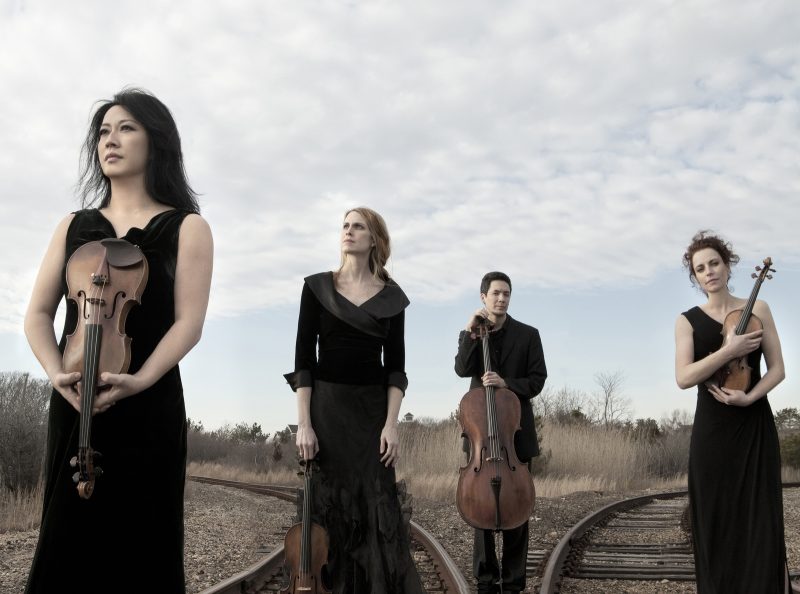
The Daedalus Quartet is comprised of violinists Min-Young Kim and Matilda Kaul, violist Jessica Thompson, and cellist Thomas Kraines. Since earning the top prize in the Banff International String Quartet Competition in 2001, the ensemble has developed a reputation for exploring and developing new works by renowned composers that include Elliot Carter, Huck Hodge, and George Perle. The Daedalus Quartet has also been the University of Pennsylvania’s string-quartet-in-residence for more than a decade.
Fallen worlds
Joshua Hey’s lens flare from Alpha Centauri (world premiere) began with hushed tremolos and downward slides, evoking the sound of a late-night siren. The meditative piece was overtone heavy and had a distinct shimmering ring that washed over one’s head. The airy harmonics in this work resembled something in between a high-pitched flute and a forced blow of breath outtake.
George Crumb’s Black Angels (second work in the first half) was written as a sort of lament for what the composer considered to be a fallen society. The work takes us on a journey in three stages: Departure (fall from grace), Absence (spiritual annihilation), and Return (redemption). We immediately heard a certain suffering of the soul when the strings play a screeching set of sixteenth notes before repeating the same pattern in pianissimo (super quiet sound). What connects the Crumb piece to Friday the 13th is in the fact that the composer laid his finishing touches on March 13, 1970 (on, you guessed it, a Friday).
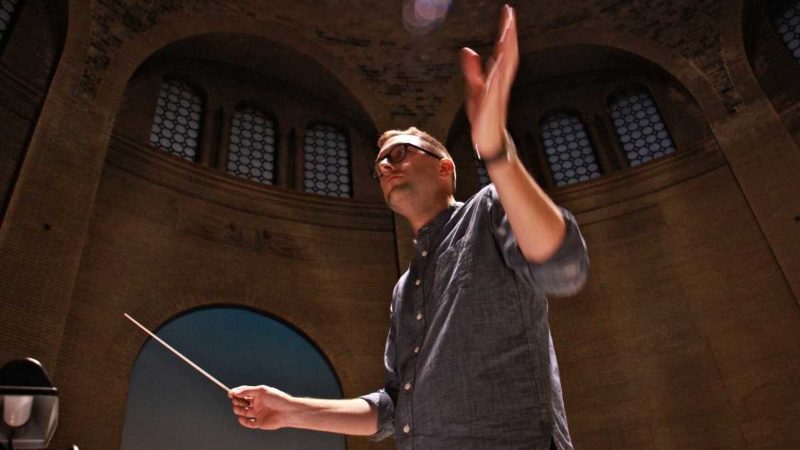
The Daedalus Quartet are a multi-tasking ensemble as well: throughout the Crumb piece, they used their instruments in unusual ways–bowing on the opposite side of the strings, trilling with their fingers capped with thimbles, and creating pedal tones. The musicians also emerged from their instruments to play percussion instruments and use the bow on several water-tuned crystal glasses.
Whispered secrets
Following intermission was Tonight We Tell the Secrets of the World, a relatively new work by Scott Ordway (who also conducted the piece). In this vibrant composition, the Daedalus Quartet performed with soprano Ah Young Hin, violinist Blake Espy, violist Veronica Jurkiewicz, bassist Anne Peterson, and saxophonist Aaron Stewart. Not only was there an expanded ensemble, but also the entire audience was encouraged to be involved as part of a whispered choir (150 voices to be exact).
The audience was split into three sections, given a text, and assigned a color. When that color was shone across the Rotunda, you were supposed to begin whispering the text given to you. The whispers had to be un-voiced (if there isn’t a feeling of vibration from the vocal chords, then the whisper is un-voiced). The audience’s whispers sounded deliciously serpent-like in their delivery. This was a great audience participation exercise; however, I could imagine it being difficult for audience members to be engaged with the music while waiting for their section’s next cue.
In contrast with the evening’s first two works, Ordway’s composition had much more sustained playing from the ensemble. Hin’s singing was particularly memorable (an all-too brief appearance), as her voice added an extra steady texture that was interwoven with the instrumental ensemble effectively.
Finally, there was the setting–the Penn Museum’s Chinese Rotunda. As the music was being played in the space, I felt a sudden sense that the sound was entering some kind of endless abyss. The acoustics in the space transferred in the music into a confined vacuum, used to great effect in these particular musical pieces. Had the program consisted of more traditional string quartet fare (Haydn, Beethoven), the music would have been swallowed. Being that this program is a more experimental expression of contemporary classical music, the hollow acoustics managed to bring across each work’s unconventional moments. Even before the quartet played a note, they took an extra beat just to take in the unique acoustics of the Chinese Rotunda. Special moments like that in the Daedalus Quartet performance could be interpreted as a signal of good luck, even on a supposedly luckless day.


